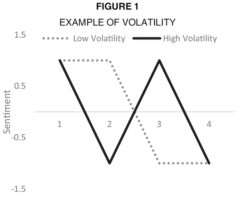The Shape of a Good Story
Everyone’s got a story.
If only this were true. In our extensive review of fundraising copy we find the sector copy reads more like an academic journal than an involving work of fiction. In case you’re wondering, the latter produces more reading and giving.
The story part of the sector’s writing is especially weak.
So, how to rectify it? Surely telling folks they need a story isn’t enough. We’ve also reviewed good stories poorly told and lousy attempts at both.
There is a tiny field in psychology called narrative psychology. Who knew? These academics know our memories are not chronological encyclopedias but rather, stories. They’ve found that personal, narrative arcs where challenge gives way to triumph (i.e. redemption stories) are common in highly generative adults; adults who have a desire to provide for future generations and make the world a better place.
These same people who tell redemption stories also tend to be happier.
This sounds an awful lot like what we’d want to achieve with a fundraising letter, doesn’t it? A redemption story that compels people to want to make the world a better place and make themselves happier in the process.
We write all our stories following this redemptive arc – challenge facing a character and setting (show, don’t tell), intervention (charity and donor) leading to positive, agentive change in the character/setting.
This story arc also has what some academics refer to as volatility or swings in emotion and sentiment. Volatility in a story – unlike your professional or personal life – is good and it’s often a case of more is more.
Consider these two stories – one dubbed High Volatility (solid line), the other Low.

The average sentiment is the same for High and Low. The type of volatility is also the same, swinging back and forth between positive and negative emotions.
(Sidenote: As it turns out a crescendo of upward (downward), positive (negative), increasingly intense emotions also counts as volatility and both can increase reader/viewer engagement).
And, they both have the same peak beginning and end. BUT… only one of these increases the amount of copy written or the amount of video watched.
More is more with the High Volatility arc producing more of the behavior we covet – i.e. “engagement”, which used to be called reading or watching before those words apparently became too specific and useful.
And it isn’t just more behavior. These type stories are viewed more favorably. People like them more, share them more…more.
And in keeping with the DonorVoice world view (that conveniently matches intuitive reality) – not all people are the same; hence this volatility effect of more reading and watching and liking is mostly because of those people who are predisposed to want higher levels of stimulation (hedonic or otherwise). Fortunately dialing up the roller coaster of emotional volatility doesn’t negatively impact those who aren’t hardwired in this way.
The story arc becomes a zigzag.
Kevin


